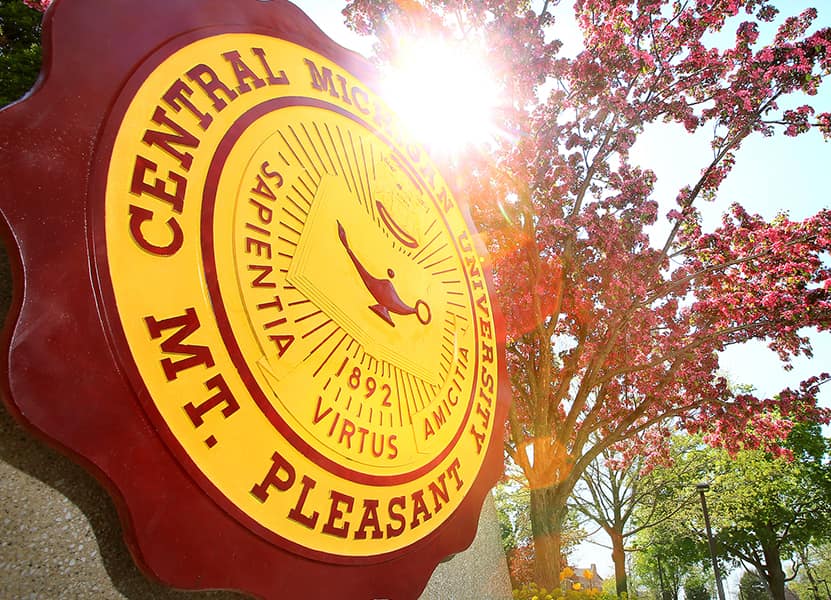This collection of Central Michigan University School of Music (SOM) recordings documents diverse musical performances and events performed in the School of Music by its faculty and students, and alumni, as well as guest musicians and artists, 1962-2018. The recordings include choral, woodwind, brass, string, keyboard, and percussion soloists and ensembles, the CMU Marching Chippewas (band), recitals, annual and holiday concerts, galas, student and faculty recitals, master classes, workshops, high school choir and honors band concerts and camps, and annual scholarship competitions including: Patricia Nixon Woodwind, Paul I. Wilworth Brass, Irwin Piano, and the Cedric Colness and Dees Vocal. Boxes 1-33 consists mainly of reel-to-reel tapes and cassettes with a few CDs, 1962-1998. Boxes 33-69 includes cassettes, CDs, and some DVDs. Programs are included with nearly every recording. Paper programs are in the original reel-to-reel box, wrapped around the cassettes, and printed on CD and DVD cases. The most unique musical source in the collection is a laptop, see CD, MicroCHIP Music, November 12, 2010, while the most unusual group name is that of the Suspicious Cheese Lords, see their CD, October 29, 2010 (both CDs are in Box 55). The collection is organized in chronological order.
There are some inconsistencies or inaccurate information in the collection. Obvious typos were checked and corrected. Sometimes label information on reel-to-reel boxes and interior labels did not match. Other times, the information indicated that newer musical events were recorded over older recording/s, sometimes several times. In these cases, we included all names, events, and dates in the Box and Folder listing since we lacked the resources to listen to all of these recordings. Overall the recordings and original housing are in good to excellent condition. For a number of years, someone wrote on cassettes labels using red ink pens and the data is now quite faded and difficult to read.
The first deposit, Boxes 1-33, was transferred in June 1997, when the SOM moved from Powers Hall to the then new Music Building. Archivist Marian Matyn and a student packed the boxes and moved them through a window into her car as the doors were blocked during renovations. The second deposit, Boxes 34-69, was packed by two students and Marian and pushed by carts into the Clarke in spring 2021 when the Music Resource Center, where the recordings had been stored and made accessible to researchers, was converted into a lounge area. The SOM switched from hard copy recordings to live streaming in early March 2020 when COVID-19 closed campus
Researchers may be interested in other SOM collections in the Clarke including those with photographs, programs, and historical information. The SOM is also represented in numerous other Clarke collections in CMU photographs, publications, homecoming and athletics materials, vertical files, as well as in separately cataloged audio recordings, videos, dissertations and thesis, and musical scores.
Organizational History:
Central Michigan University (CMU)'s Music Department dates almost to the university's founding. By 1892, Mrs. Eva McAllister was the Head of the Department. In 1901, Harper G. Maybee became the Department Head and added a Festival Chorus, a Girls Glee Club, and a 24-Piece Orchestra. From 1913 on, various courses in music analysis, appreciation, instructional techniques, and theory were added. In 1928, the Festival Chorus divided into the A-Capella Choir, Womens Glee Club, and Mens Glee Club. Smaller groups, Madrigal Singers, quartets, and trios also began. The college band was established in 1918 by Mr. J. Harold Powers. The band program has expanded to include a concert band, a marching band, and several smaller ensembles. In 1944, more courses that had previously been offered on a club basis were added for credit. During the 1940s and 1950s, more private instruction and credit courses were added.
In 1995, the Department of Music became the School of Music. The Department of Music's original mission was to prepare students to become public school music teachers. Now, the School of Music offers undergraduate, graduate, specialist, and doctorate degrees. Undergraduates may specialize in Music Performance in Keyboard, Voice, or Band and Orchestral Instruments; Music Theory or Composition; Music Education; or Music in Liberal Studies. Graduates may opt to specialize in Music Performance in Keyboard, Voice, or Band and Orchestral Instruments; and Music Education. Currently, the School of Music is accredited by the North Central Association of Colleges and Schools and the National Association of Schools of Music.
In 1998, the School of Music moved from its longtime home in Powers Hall to a new, state-of-the-art facility, known simply as the Music Building.
Later additions to the collection have been added over time.
